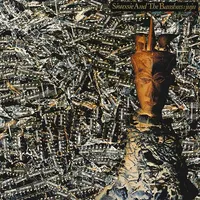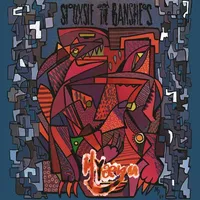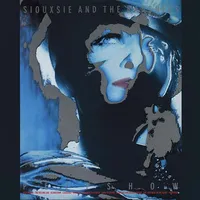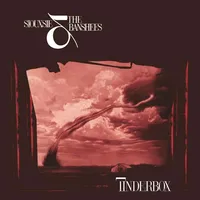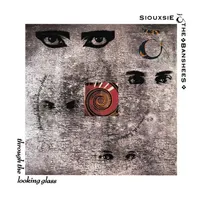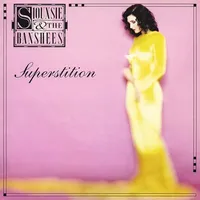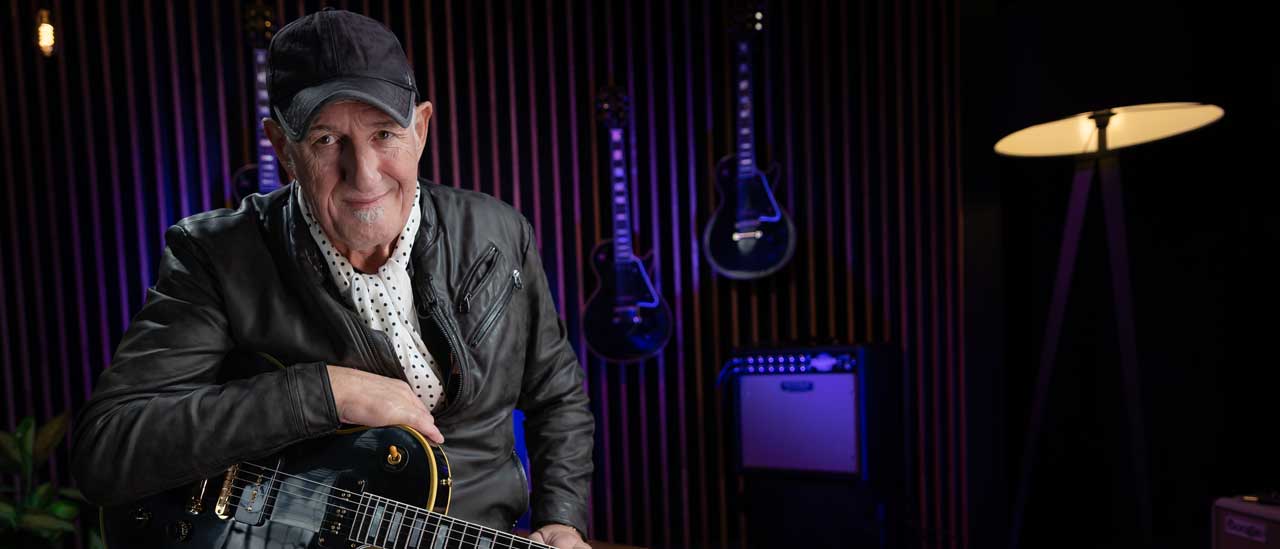The Siouxsie And The Banshees albums you should definitely own
From punk and post-punk via psychedelia, avant and art-rock, these are the best Siouxsie And The Banshees albums

From the south-east suburbs, the so-called Bromley contingent of London’s 70s punks – including the eventual songwriting partnership of vocalist Susan ‘Siouxsie Sioux’ Ballion and bassist Steven ‘Severin’ Bailey (along with friends Simon ‘Six’ Barker and Simone Thomas) – were standing behind the Sex Pistols during their notorious teatime TV incident of December 1976.
In fact it was a 19-year-old Siouxsie – with her blatantly sarcastic flirting at Bill Grundy eliciting the 53-year-old’s creepy response: “We’ll meet afterwards, shall we?” – that led Pistols guitarist Steve Jones to unleash his volley of fruity language. Things deteriorated rapidly for the Pistols’ public profile, but Sioux left an imperious and indelible mark.
Two months earlier, Siouxsie and Severin threw together a band – with guitarist Marco Pirroni, who would later play with Adam Ant, and eventual Pistols bassist Sid Vicious on drums – for London’s legendary 100 Club Punk Special two-day festival.
With the solidified line-up of drummer Kenny Morris and guitarist John McKay from 1977, Siouxsie And The Banshees were a popular live band. But they weren’t signed until ’78, following a graffiti campaign by manager Nils Stevenson; London’s record company buildings were daubed with: “Sign The Banshees: do it now.”
Despite the longevity of the classic line-up – Sioux and the rhythm section of Severin and drummer Peter ‘Budgie’ Clarke – the Banshees burned through 10 guitarists. That fluctuating line-up aided diversity and rapid development of the Banshees’ sound, but the inconsistency didn’t cost them momentum; it’s hard to think of another band with the prolific creativity to release albums with such quality and regularity.
The Banshees were at home in the fertile post-punk era, but their sound blurred psychedelia, avant and art-rock. One of the late-20th century’s greatest British vocalists, Siouxsie remains highly influential both artistically and stylistically to countless bands and singers.
Following the band’s split, Steve Severin became a film soundtrack composer, while Siouxsie and Budgie continued their art-rock side project The Creatures. In 2007, Siouxsie released her solo album Mantaray, and most recently duetted with Yoko Ono on Walking On Thin Ice at the 2013 Meltdown festival in London.

John McGeoch’s career peak, Juju was the former Magazine guitarist’s second album as a Banshee. His breathtaking assortment of styles on Spellbound is able to breathe despite the rhythm section’s almighty assault. The brooding but comparatively light Doors-inspired Arabian Nights provides some relief before the terror.
The nagging cold machinism of Monitor precedes their single darkest track, the frankly terrifying Nightshift. McGeoch’s dissonant guitar is in desperate combat with the bleak brutalist repetition of Budgie’s economical thud and Severin’s stark bass. An unnerving but grandiose post-punk masterpiece.
A Kiss In The Dreamhouse (Polydor, 1982)
Contrasting the darkness of Juju, the rich orchestration of A Kiss In The Dreamhouse leads with Severin’s antagonistic high bass notes feeding into McGeoch’s trademark finger-picking for Cascade’s spectacular crescendo. The waltz of the Velvets-inspired Melt!, with its sparkling mandolin riff, and Slowdive’s experimental strings nod to an album ahead of its time. (The “Oh my god” three and a half minutes into Slowdive was a string player vocalising their exhaustion.)
Dreamhouse was a creative high point for the band, showcasing a considerably evolved sound inside just four years. The Banshees were at the top of their game.
Having progressed beyond standard punk rock with early singles Hong Kong Garden and The Staircase (Mystery), the Banshees retained their Velvets-sieved-through-krautrock sound on their debut album. An early example of post-punk, it had an immediate influence on bands such as Joy Division and Soft Cell.
The confrontational Jigsaw Feeling and abstruse Overground feature John McKay’s angular guitar playing, while Mirage is a perfect avant-pop song, contrasting the uncompromising Metal Postcard (Mittageisen). The Scream was characteristically bolshie Banshees but a brilliant bleeding-edge debut.
Bringing in idiosyncratic Slits drummer Budgie and guitarist John McGeoch proved serendipitous for the Banshees’ third album. Pistols guitarist Steve Jones filled in on three tracks while in-demand McGeoch untangled himself from recording the Visage debut (Kaleidoscope was the third 1980 landmark album he co-wrote and played on, along with Magazine’s The Correct Use of Soap).
Minimalist yet engaging, Kaleidoscope’s spartan psychedelia, with its themes of psychological distress, and the unconventional hit single Happy House, showcased the innovative talents of Budgie and McGeoch.
The Cure’s Robert Smith was the reliable pair of guitar hands the Banshees needed following McGeoch’s dismissal from the group after issues caused by his alcoholism. In the same way that his work with The Cure influenced Smith’s co-writing with Severin on Hyæna (they had already worked together as The Glove by this point, releasing their only album Blue Sunshine in 1983), in turn Hyæna influenced The Cure’s subsequent pop-psychedelia of The Head On The Door.
The piano melody on Hyæna’s lead single, the prog-inflenced Swimming Horses, was later re-used by Smith on The Cure’s Six Different Ways.
Where post-punk meets German Expressionism. Like Join Hands and Juju, Peepshow is conceptual in style. The impressively discordant Peekabo sets the tone. It sounds like a sonic freak show performed down the side alley of the Kit Kat Klub by fringe lunatics considered too outré to play inside.
Severin’s The Killing Jar is an underrated late-Banshees classic, with a devastatingly evocative lyric and lush string arrangement. Peepshow is further front-loaded with Severin’s Scarecrow featuring his chuntering low-end metallic notes. A soundtrack for a Batman villain that was never made.
Guitarist John Valentine Carruthers, from post-punk industrial outfit Clock DVA, replaced Smith on the Banshees post-Hyæna stopgap EP The Thorn. Tinderbox, his first full-length, was a polar opposite to Hyæna, and the chiming electropop of lead single Cities In Dust scored the Banshees their first success in the States.
The lyrically troubling Candyman is the closest the Banshees have come to a traditional goth sound, while the up-tempo Sweetest Chill features a distinctive circular melodic Carruthers riff. The ominous 92º expands the theme, but it’s closer to electronica than to goth – albeit filtered through the Banshees unique back catalogue.
Through The Looking Glass (Polydor, 1987)
Inspired by Bowie’s Pin Ups album, The Banshees’ own covers album Through The Looking Glass opens with a bravura version of Sparks’s near-impossible-to-cover This Town Ain’t Big Enough For The Both Of Us.
Two single releases comprised the superbly menacing brass- and chimes-laden take on Iggy Pop’s The Passenger, and a Middle-Eastern-inspired version of Dylan/ Danko’s This Wheel’s On Fire with Carruthers’s shrieking riff slicing through McCarrick’s dazzling strings and Budgie’s tom rolls. Kraftwerk’s Ralf Hütter rated the cover of Hall Of Mirrors as “extraordinary”. Cover versions, but made entirely their own.
A vague conceptual theme on the horrors of World War I. With its anguished unease, opener Poppy Day (taking its lyric from WWI poet John McCrae’s In Flanders Fields) sets the tone with McKay’s jarring guitar while Morris’s snare fires useless bullets.
The increasing sonic distress leads towards the surreal nightmarish tension of Premature Burial. Despite a guitar sound verging on white noise, the chilling Playground Twist is almost a reprieve. ‘Ding-a-ling-a-fucking-ding.’ Siouxsie yells on the challenging reinterpretation of The Lord’s Prayer, harking back to the 20-minute improv the Banshees performed at the 1976 100 Club Punk Special.
And one to avoid...
You can trust Louder
There is no such thing as a bad Banshees album, but if you leave one until last maybe make it this. They were still evolving their sound in the early 90s when Polydor pulled the plug despite The Rapture‘s positive reception in 1995.
From penultimate album the electronica-led Superstition, ravishing single Kiss Them For Me, featuring 20-year-old prodigy Talvin Singh on tabla at the outset of his prestigious career, is one of the band’s greatest achievements. They’d spent over a decade constantly evolving their sound at a pace no one could outrun. Kiss Them For Me peaked at No.23 on the Billboard chart (No.32 in the UK), making it their biggest US success.
Sign up below to get the latest from Classic Rock, plus exclusive special offers, direct to your inbox!
A regular contributor to Louder/Classic Rock and The Quietus, Burrows began his career in 1979 with a joke published in Whizzer & Chips. In the early 1990s he self-published a punk/comics zine, then later worked for Cycling Plus, Redline, MXUK, MP3, Computer Music, Metal Hammer and Classic Rock magazines. He co-wrote Anarchy In the UK: The Stories Behind the Anthems of Punk with the late, great Steven Wells and adapted gothic era literature into graphic novels. He also had a joke published in Viz. He currently works in creative solutions, lives in rural Oxfordshire and plays the drums badly.
